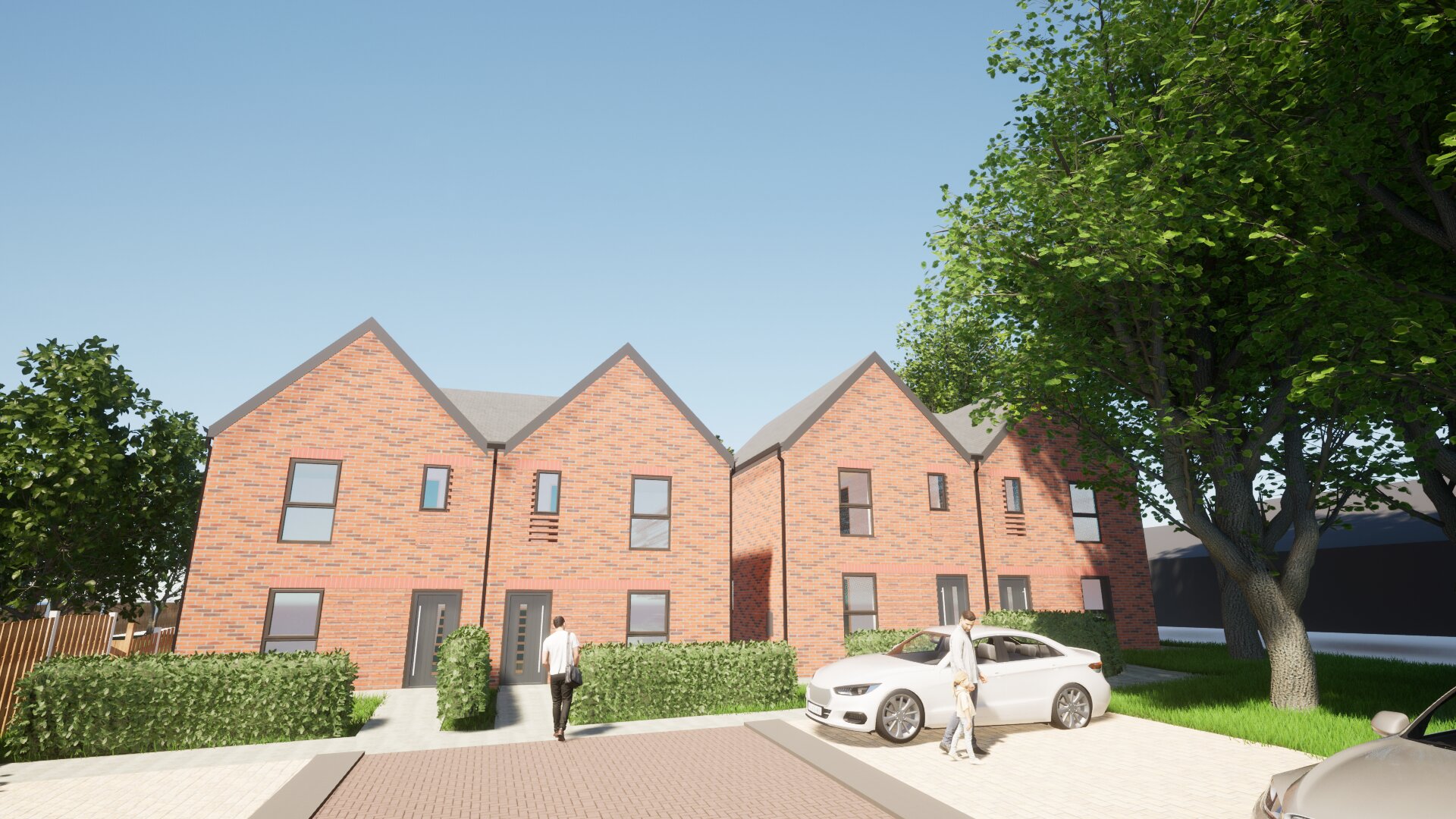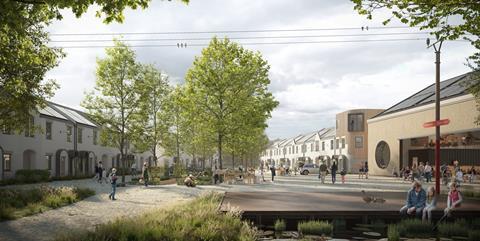Fixing Social Housing in the UK: A Roadmap to Better Homes, Fairer Funding, and Sustainable Futures by William Ringsdorf

Editor’s note: This is an article written by Architect William Ringsdorf on LinkedIn. With over 32 years of experience in designing transformative spaces, he founded his own architecture firm 25 years ago, specialising in social housing and custom private residences – focusing on creating meaningful and visually attractive environments. His approach is rooted in the belief that design should be empowering and enjoyable, removing the stress and insecurity often associated with creating personal spaces.
It’s time we reimagine our approach to social housing – one that prioritizes equity, sustainability, and community well-being – Ringsdorf
Britain is in the grip of a housing crisis. Over 4 million people are waiting for social housing, while hundreds of thousands remain homeless or in precarious accommodations. Despite this, solutions to the crisis often favour short-term fixes over meaningful reform.
Some advocates propose building on the green belt, sacrificing vital environmental resources in the name of expedience. Others look to speculative private developments on the outskirts of cities that often fail to address affordability and long-term sustainability. Both approaches overlook systemic issues at the heart of the problem.
But there is another way. By learning from past successes, championing smarter design, and treating housing as a form of essential infrastructure, Britain can forge a new path. This article lays out a roadmap for change—one that prioritises equity, sustainability, and the protection of both people and the environment.
1. The Current State of Social Housing
Once a hallmark of Britain’s post-war vision, social housing has diminished into a shadow of its former self. In the 1980s, widespread privatisation, the erosion of council building powers, and significant cuts to funding caused a seismic shift in housing policy. Today, we grapple with the consequences.
Key Challenges:
- Underfunding: Public investment in social housing has plummeted over the decades, leaving councils struggling to maintain even their existing stock.
- Reliance on Private Developers: Social housing is frequently relegated to an afterthought in market-oriented developments, forcing those in need to wait even longer for affordable homes.
- Design Decline: Cost-cutting has led to smaller, poorly designed flats that fall short of Parker Morris standards, once the benchmark for housing quality.
- Affordability Issues: “Affordable rent” now sits at up to 80% of market rates, creating a growing divide that leaves low-income families excluded.
- The result? Stigmatised housing developments, poor-quality living conditions, and increasing regional inequality. Without intervention, this downward trend will only continue.
2. Busting the Myth of Housing Scarcity
The UK’s housing crisis is real, but the widespread narrative of an irreparable shortage is misleading. Headlines scream about the need for more homes yet ignore the staggering number of vacant properties already sitting unused.
According to government data from 2022, there are over 676,000 vacant homes in England alone. These aren’t hypothetical figures but tangible wasted opportunities, representing housing stock that could be part of the solution. Long-term neglect and speculative investments often cause these spaces to sit idle, but the issue is solvable—with proper policy and incentives.
Inefficient Land Use in Cities
Another overlooked issue lies in how urban land is underutilised. Major British cities such as London and Manchester often sprawl outward instead of growing upwards. Amsterdam and Paris, by contrast, boast population densities almost double that of their British counterparts—showcasing how compact, well-planned cities can offer vibrant public spaces, efficient transport, and plenty of housing.
The Disconnect
Obsessing over headline-grabbing housing targets ignores localised problems. Why push into green belt land when existing cities have space that remains inefficiently used? By reinvesting in vacant homes and densifying existing urban areas, Britain can tackle housing needs sustainably.
3. Smarter Growth: Learning from Europe
European cities offer striking examples of high-density living done right. Their success comes down to balancing housing affordability, public spaces, and accessibility, providing lessons for the UK.
The European Advantage:
- Amsterdam: Compact neighbourhoods combine housing, green spaces, and excellent public transport, allowing the city to thrive sustainably.
- Vienna: Nearly 60% of residents live in subsidised housing, supported by robust public funding and rigorous design standards. These developments are indistinguishable from market-rate properties and include vibrant, community-oriented facilities.
- Germany & Denmark: Emphasise co-housing and Baugruppen models, where residents co-design housing to prioritise shared spaces, sustainability, and adaptability.
What the UK Can Learn:
- Increase urban density without compromising liveability.
- Build closer to public services, schools, and green spaces to reduce car reliance and emissions.
- Avoid suburban sprawl by prioritising regeneration over new development on rural land.
Smarter growth is not about cutting corners. It’s about reimagining cities as liveable, inclusive spaces for everyone.
4. Rethinking Funding: Fairer and Sustainable Solutions
The foundation of any transformation in social housing is funding. Successive underinvestment has left local authorities overly reliant on private developers, unable to meet their communities’ needs. Closing the funding gap means embracing innovative, equitable policies.
The £18.1 Billion Challenge:
Research suggests that meeting the UK’s social housing needs would require £18.1 billion annually, enabling councils to build 100,000 social homes per year (1). While this may seem ambitious, the right funding mechanisms make it achievable.
Blended Funding Solutions
- Progressive Income Tax Increases: Higher-income earners contributing marginally more could generate billions.
- Wealth Taxes: A modest 1% levy on net assets over £2 million could bring in £16 billion annually.
- Corporate Tax Reforms: Slightly higher rates for companies with profits above £1 million would balance contributions from businesses profiting within the UK economy.
- Capital Gains Reform: Aligning capital gains tax rates with income tax for significant earnings ensures fairer contributions from the wealthiest.
- Public Borrowing & Housing Bonds: Councils could access low-interest loans via Housing Bonds or the Public Works Loan Board.
Housing reform need not just fall on taxpayers. Ethical investors, pension funds, and partnerships could provide alternative pathways to long-term affordability.
5. The Role of the Green Belt: A Resource Worth Protecting
Far too often, green belt land is painted as expendable—a necessary sacrifice to meet housing demand. But this ignores what makes the green belt such a valuable national asset.
Why Protect the Green Belt?
- Environmental Stewardship: It absorbs CO2, protects wildlife habitats, and mitigates urban heat islands.
- Climate Resilience: Forests, grasslands, and waterways reduce flood risk and enhance air quality.
- Wellbeing: Green spaces improve mental and physical health in ways that cities simply cannot replicate.
Destroying these spaces for short-term gains risks permanent, irreversible damage. Instead, policymakers must double down on policies that promote urban densification without sprawl.
6. Brownfield Gold: Unlocking Urban Potential
National analyses suggest there’s enough brownfield land across the UK to provide over 1.2 million homes, with nearly half of these opportunities situated in urban areas. These spaces are already connected to essential infrastructure like transport, schools, and utilities, making them far more cost-effective than greenfield development.
Innovative Solutions:
- Modern construction techniques like modular homes accelerate brownfield regeneration.
- Governments can incentivise development with subsidies, tax breaks, and fast-track planning permissions.
Goldsmith Street in Norwich, a celebrated Passivhaus social housing project, showcases how brownfield regeneration can deliver affordable, sustainable housing while revitalising communities.
7. Designing High-Quality Housing
More homes aren’t enough—they need to be well-designed, spacious, and liveable. Britain must revive Parker Morris-inspired standards for space, light, and storage while embracing sustainability and community involvement.
Essentials for Better Housing:
- Sustainability: Incorporate Passivhaus principles, durable materials, and solar energy to produce housing future generations can rely on.
- Mixed-Tenure Developments: Integrate market-rate housing with social units to avoid segregation.
- Community Focus: Provide access to transport, green spaces, and co-designed public spaces to enhance liveability.
8. Regional Investment: Tackling Inequality Beyond Housing
Rebalancing Britain’s economy isn’t just a housing issue—it’s about creating opportunities outside London and the Southeast. Investments in housing must be paired with growth in underrepresented regions like the North and Midlands.
Key priorities include:
- Investing in transport infrastructure (e.g., HS2).
- Revitalising towns and small cities through new industries and public services.
9. Tackling Inequality Beyond Housing
Addressing the housing crisis is not an impossible challenge—what it demands is bold political leadership. Policymakers must reject short-term fixes that harm communities or the environment and embrace long-term solutions rooted in sustainability and equity.
Conclusion
Fixing social housing is more than a housing issue—it’s about addressing inequality, spurring regional growth, and protecting Britain’s shared heritage. By tackling funding barriers, prioritising urban regeneration, and fostering better design, Britain can build not just homes, but a future. The time for action is now.
(1) While specific research directly citing the £18.1 billion figure is limited, various studies and reports provide insights into the substantial investments required to expand social housing in the UK. For instance, the National Housing Federation and Shelter have estimated that building 90,000 new social rented homes annually would require an initial government investment of £11.8 billion per year. Additionally, the UK government’s Affordable Homes Programme allocated £11.5 billion to support the development of up to 180,000 affordable homes over a five-year period. These figures suggest that an annual investment in the range of £18.1 billion could feasibly support the construction of 100,000 new social homes each year, along with their ongoing maintenance and operation costs.
Read this article on Ringsdorf’s LinkedIn here.

